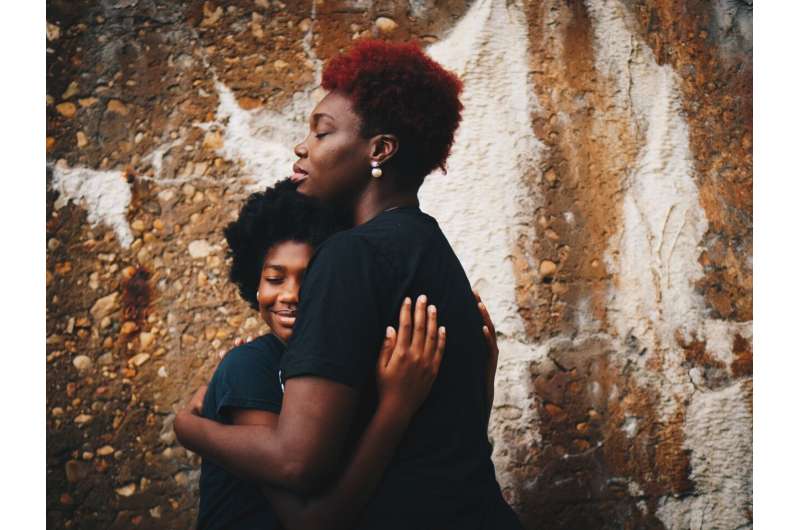This article has been reviewed according to Science X's editorial process and policies. Editors have highlighted the following attributes while ensuring the content's credibility:
fact-checked
reputable news agency
proofread
Why is it important to teach children about body safety and boundaries?

The statistics reported by the Rape, Abuse & Incest National Network are sobering: 1 in 3 girls and 1 in 20 boys will experience sexual abuse or sexual assault by the time they reach age 17.
The idea that anyone would sexually abuse a child is terrifying, especially for parents and caregivers. But like with any risk our children might face, we need to be able to empower them with information that will help them recognize unsafe situations.
Children and teens who feel in control of their bodies are less likely to fall prey to sexual abusers. And if they do suffer abuse, they are more likely to tell a trusted adult—which can make all the difference in stopping the events and subsequently helping them recover from this painful experience.
Here are some tips to help parents teach their children about body boundaries and safety:
- Use appropriate language. Teach children proper names for all body parts, including their genitals: penis, vagina, breasts and buttocks. Making up names for body parts may give the impression that they are bad or a secret and cannot be talked about. Also teach your child which parts are "private." This includes the parts of their body that are covered by their swimsuit, as well as their mouth. These places should not be touched or looked at without their permission.
- Evaluate your family's respect for modesty. Modesty isn't a concept most young children can fully grasp. But you can still lay a foundation for future discussions and model good social boundaries. If you have kids of various ages, for example, teach your younger children to give older siblings their privacy if they request it.
- Don't force affection. Do not force or guilt your children to give hugs or kisses. It is OK for them to tell even grandma or grandpa that they do not want to give them a kiss or a hug goodbye. Teach your child alternate ways to show affection and respect without close physical touch (high-fives, thumbs-up, etc.) Reinforce that their body is theirs to control, a concept called body autonomy.
- Explain OK vs. not-OK touches. An "OK touch" is a way for people to show they care for and help each other, like when caregivers help with bathing or toileting, or when doctors check to make sure their body is healthy. A "not OK touch" is one they don't like, hurts them, makes them feel uncomfortable, confused, scared or one that has anything to do with private parts.
- Reinforce that people should respect each other. Discuss how it is never OK for anyone to look at or touch their private parts without their permission. At the same time, they should not look at or touch other people's bodies without their permission.
- Give your children a solid rule about inappropriate touches. This will make it easier for them to recognize a not-OK touch if one happens and empower them to say no to these.
- Remind your child to always tell you or another trusted grown-up if anyone ever touches their private parts or makes them feel uncomfortable in any way. Inappropriate touching—especially by a trusted adult—can be very confusing to a child. Reassure your children that you will listen to and believe them if they tell you about not-OK touches.
- Control media exposure. Make a family media plan. Get to know the rating systems of video games, movies and television shows, and make use of parental controls available through many cellular, internet, cable and satellite providers. Providing appropriate alternatives is an important part of avoiding exposure to sexual content in the media. Be aware that children may see adult sexual behaviors in person or on screens and may not tell you that this has occurred.
- Review this information regularly with your children. Some good times to talk to your children about personal safety are during bath time, bedtime, doctor visits and before any new situation. Children meet and interact with many different adults and children every day: at child care, sports practices, dance classes, camps and after-school programs, to name a few. Giving them tools to recognize and respond to uncomfortable situations is key.
- Expect questions. The questions your child asks and the answers that are appropriate to give will depend on your child's age and ability to understand. It is always important to tell the truth.
Always let your child know you believe in them and will do everything you can to protect them from harm. Help them understand that they will not be in trouble for telling you about information that should not be kept secret. Empower them to tell another trusted adult if they are too uncomfortable telling you.
If you have any questions about ways to keep your child safe from harm, including sexual abuse, talk with your pediatrician.
2023 Tribune Content Agency, LLC.




















